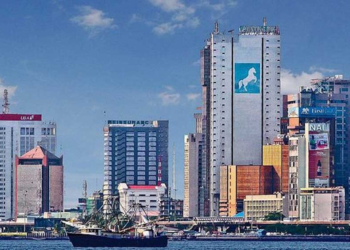The UK manufacturing sector remained in contraction territory at the end of the second quarter, as output, new orders, and employment experienced further declines. Despite some relief in price and supply chain pressures, uncertainties among clients and subdued conditions in domestic and export markets continued to weigh on order books.
According to the seasonally adjusted S&P Global/CIPS UK Manufacturing Purchasing Managers’ Index® (PMI®), June saw a decline to a six-month low of 46.5, down from May’s 47.1. The PMI has signaled contraction for the past 11 consecutive months. All five subcomponent indices, including output, new orders, stocks of purchases, employment, and suppliers’ delivery times, reflected weaker operating conditions.
While output contracted for the fourth consecutive month in June, the pace of downturn slowed. Investment and intermediate goods producers experienced declines, while consumer goods output showed mild growth. Reduced new order intakes and excess capacity were cited as reasons for lower production.
The outlook for output at the end of the second quarter was less optimistic. Although 53% of manufacturers still forecast growth in the next 12 months, overall optimism reached a six-month low. The anticipation of new product launches, increased spending on sales and marketing, and capital investment were expected to boost production. However, concerns about market uncertainty, the cost-of-living crisis impacting demand, and the possibility of clients switching to lower-cost alternatives tempered expectations.
In June, manufacturers faced lackluster demand both domestically and in overseas markets. This led to a decrease in new order intakes for the third consecutive month, with the rate of contraction accelerating to its fastest since January. Clients showed reluctance to commit to new contracts, particularly as many had excess stock.
The decline in new export order intakes was driven by weaker demand from markets such as the US, mainland China, Europe, and Brazil. Foreign demand deteriorated for the seventeenth consecutive month and at the fastest pace this year. Subdued market confidence and increased competition contributed to this decline.
The decline in output and new orders prompted UK manufacturers to reassess their staffing requirements. Employment fell for the ninth consecutive month, with the sharpest rate of reduction since March. Weaker demand, redundancies, and cost management initiatives all contributed to job losses.
Weak demand and improved material availability resulted in lower backlogs of work and increased stocks of finished goods in warehouses. Inventories of purchases decreased due to a notable reduction in purchasing activity. Lower demand for inputs and improved vendor lead times also contributed to the overall improvement.
Average input costs declined for the second consecutive month, reaching the greatest extent since February 2016. Weaker demand for inputs, reduced fuel costs, commodity price decreases, and improved supply chains contributed to lower costs. However, elevated price levels for many inputs persisted due to sustained inflationary periods. Average output prices decreased for the first time since April 2016.
Commenting on the survey results, Rob Dobson, Director at S&P Global Market Intelligence, highlighted that the UK manufacturing sector continued to report recessionary conditions in June. Weak domestic and export market conditions, along with increased competition and elevated costs, were impacting producers. Dobson noted that although short-term respite was offered by reduced supply chain and cost pressures, they were unlikely to boost production. Manufacturers were cutting back spending on purchasing and employment and releasing capital tied up in stocks.
Dr. John Glen, Chief Economist at the Chartered Institute of Procurement & Supply, expressed concern over the industry’s downturn. The PMI has signaled contraction for almost a year, with depressed sales from domestic and overseas markets and persistent price pressures. Although there were some signs of improvement in the Middle East, the overall figures did not encourage optimism in the industry. Manufacturers reduced stock levels, limited buying and investments, and experienced job losses.











